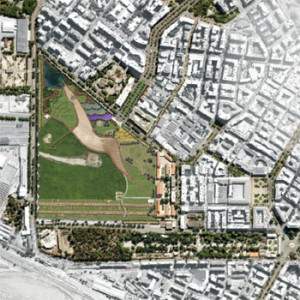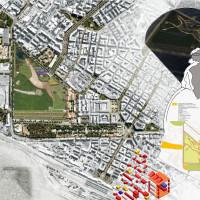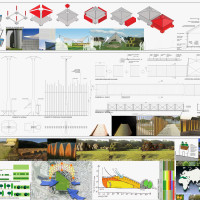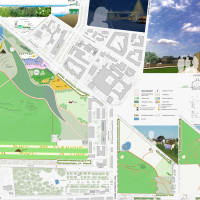TYPE urban park
CLIENT comune di Foggia
YEAR 2009 concorso di idee
PROJECT with ing. Cotecchia, archeologo Fioriello
The “Campi Diomedei” Park, located among the main junctions of the city of Foggia, is the pivot of the circuit of new urban functions created in the surrounding context and an element of enhancement in terms of production, study and research of the archaeological and cultural heritage. The principle adopted is absolute flexibility and modifiability in relation to subsequent archaeological studies and discoveries in the air. Archaeological park and urban park are integrated in a unitary image that assimilates the entire area to one and the other. A significant element in the design approach is the figure of the horse representing the main routes.
In fact, the park has been conceived as an equestrian figure, closely linked to the myth of Diomedes, hero of the Trojan War, and to its previous use as a hippodrome. The horse organises access points and crossing lines, separating with paths and fences the spaces of the archaeological park and those of the urban park. In response to the question of the competition, elementary components are proposed to be assembled in multiple combinations, disassembled and reassembled, organised in different ways to respond to conditions that are unpredictable today.
The building housing the entrance to the archaeological park and the classrooms is a truly dismountable, energy autonomous structure; the photovoltaic lighting system is proposed as totems embedded in the ground to which benches, fences, etc. are integrated. The land art areas are characterised by natural and modular elements (hay bales), which are easily removable; the species of the proposed plantings have been identified with the aim of minimising water requirements and can vary; the recovery of the archaeological resource is enhanced with natural and non-invasive elements; modular wooden walkways of various sizes become modular elements with light covers along the paths.
GALLERY




